Samsung QN85D is the entry-level model in the Neo QLED series for 2024, but it certainly doesn’t come across as a "budget" option. It’s a television that combines modern technology with convenient smart features. During tests, the Tizen system operated smoothly, and integration with the SmartThings ecosystem made it easy to connect other devices in the home. If we use Apple devices, AirPlay works flawlessly, which is convenient, especially for viewing photos or videos from our phone. As for its performance during daily use, it simply works very well. The television handles viewing even in bright rooms – its brightness is sufficient that there’s no need to cover the windows. Additionally, the stable central stand not only looks good but also adds confidence that the device is standing securely and will definitely fit on smaller furniture. There is a lack of recording function, but the solar remote control, which operates decoders (e.g. Canal+) and the PiP function are practical additions that anyone who enjoys spending time watching regular television will appreciate. As for the picture – because that’s the most important thing in a TV – the QN85D makes a great impression. The VA panel provides very good blacks – especially if we watch the television head-on. Thanks to miniLED backlighting, the television better controls the light, resulting in much more detail visible in dark scenes. When it comes to motion fluidity, the television performs excellently thanks to the 120 Hz refresh rate – both games and matches are enjoyable to watch. If we’re gaming, low input lag combined with an excellent motion smoother and game bar will be a significant advantage – gameplay will be a pleasure. Samsung QN85D is a versatile television that will perform well for both everyday television watching and more demanding sessions or gaming on a console. Although it lacks some features, such as recording, its picture quality, motion fluidity, and smart capabilities definitely make up for these shortcomings. If we’re looking for a modern yet affordable Mini LED model, QN85D will be a very good choice.
- Matching (Score)
- Our verdict
- TV appearance
- Where to buy
- Contrast and black detail
- HDR effect quality
- Factory color reproduction
- Color reproduction after calibration
- Smoothness of tonal transitions
- Image scaling and smoothness of tonal transitions
- Blur and motion smoothness
- Console compatibility and gaming features
- Input lag
- Compatibility with PC
- Viewing angles
- TV efficiency during daytime
- Details about the matrix
- TV features
- Apps
- Playing files from USB
- Sound
Samsung Neo QLED QN85D / QNX1D vs SAMSUNG QN80F
Direct compare
Neo QLED / QN85D / QNX1D
QN80F

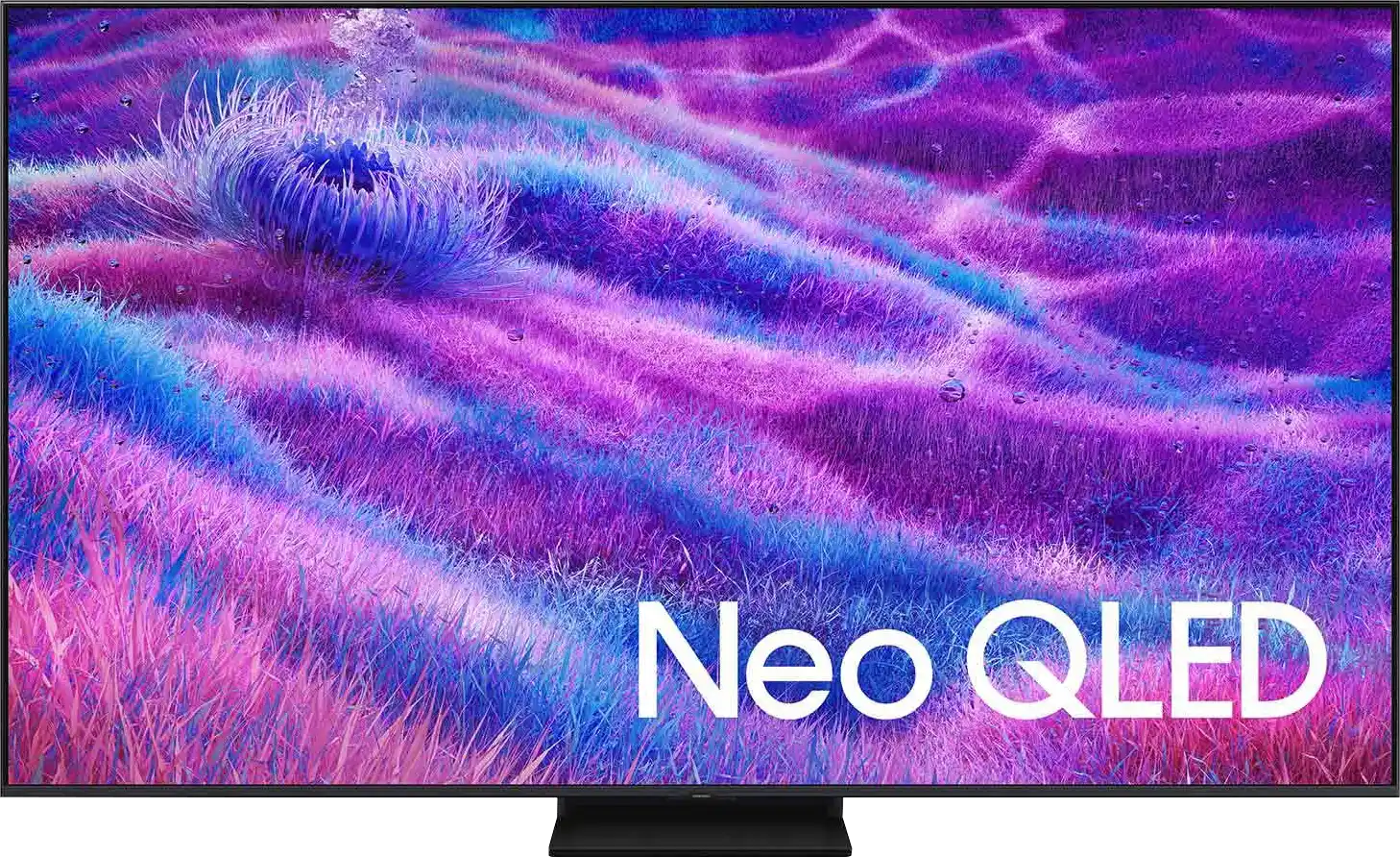
Panel type: LCD VA
Resolution: 3840x2160
System: Tizen
Model year: 2024
Complete the survey to find out the result

Panel type: LCD VA
Resolution: 3840x2160
System: Tizen
Model year: 2025
Complete the survey to find out the result

Overall rating
7.4
7.3
Movies and series in UHD quality
6.7
6.9
Classic TV, YouTube
6.8
6.8
Sports broadcasts (TV and apps)
6.7
6.7
Gaming on console
8.9
8.5
TV as a computer monitor
7.6
8.8
Watching in bright light
7.3
6.6
Utility functions
7.4
7.7
Apps
8.7
8.7
Sound quality
7.0
6.7
Complete the survey to find out what fits your preferences
Advantages
Nice contrast - Miniled backlighting
Very good for gamers - 120Hz, 4xHDMI 2.1, low input lag
Tizen operating system with SmartThings and AirPlay support – wide integration and flexibility
Very high brightness 825 cd/m² – good performance in bright rooms
Pleasant sound with noticeable bass
Great black levels and contrast - VA panel combined with MINI-LED backlighting.
Excellent brightness - up to 1000 nits in HDR
Fast and responsive panel - 144 Hz
Robust support for gamers - 4xHDMI 2.1, VRR, ALLM, GameBar, Game Motion Plus
Very good usability in daylight
Advanced Tizen operating system
Easy to use
PiP function
Disadvantages
No recording feature
Limited support for multimedia formats, no DTS audio format
No DTS format support – a limitation when connecting a home theatre system
No USB recording function
Relatively few dimming zones
Issues with the HGiG function (for gamers) – the update removed this option*
Our verdict
QN80F is the first in the history of Samsung's "eighty range" to feature Mini LED backlighting. And it does it really well. Although the number of dimming zones isn't staggering, the black levels are solid, and in combination with high brightness, it allows for a very decent picture in HDR content. Additionally, there's a 144 Hz panel that provides excellent motion fluidity, and the gaming features – VRR, ALLM, Game Motion Plus – make the QN80F an option truly designed for those gaming on consoles or PCs. The television operates quickly and responsively, and the Tizen system runs like lightning – whether you’re searching for apps or switching sources. Is there anything to nitpick? Of course, as always – there are shortcomings in the system (like USB recording), DTS support is absent, and Mini LED comes with its own limitations. But the QN80F is a fantastic everyday television – versatile, refined, and... with great price potential. Looking at the history of this series, we can expect that this "eighty" will still shake things up once it hits the first reasonable promotions. And then it could be virtually unbeatable at its price – especially if Samsung fixes the minor teething issues.
TV appearance





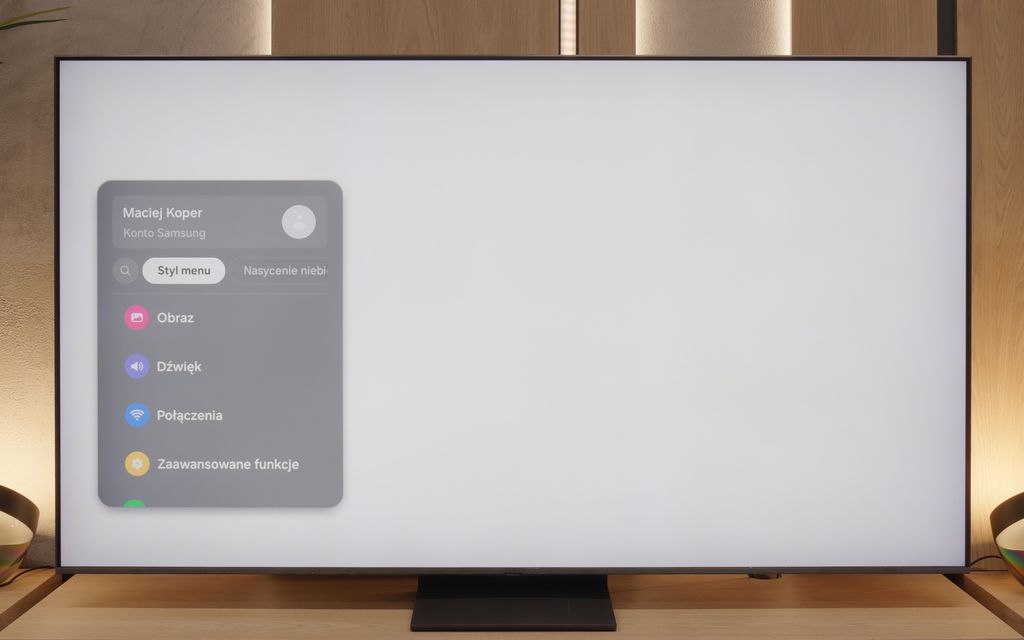
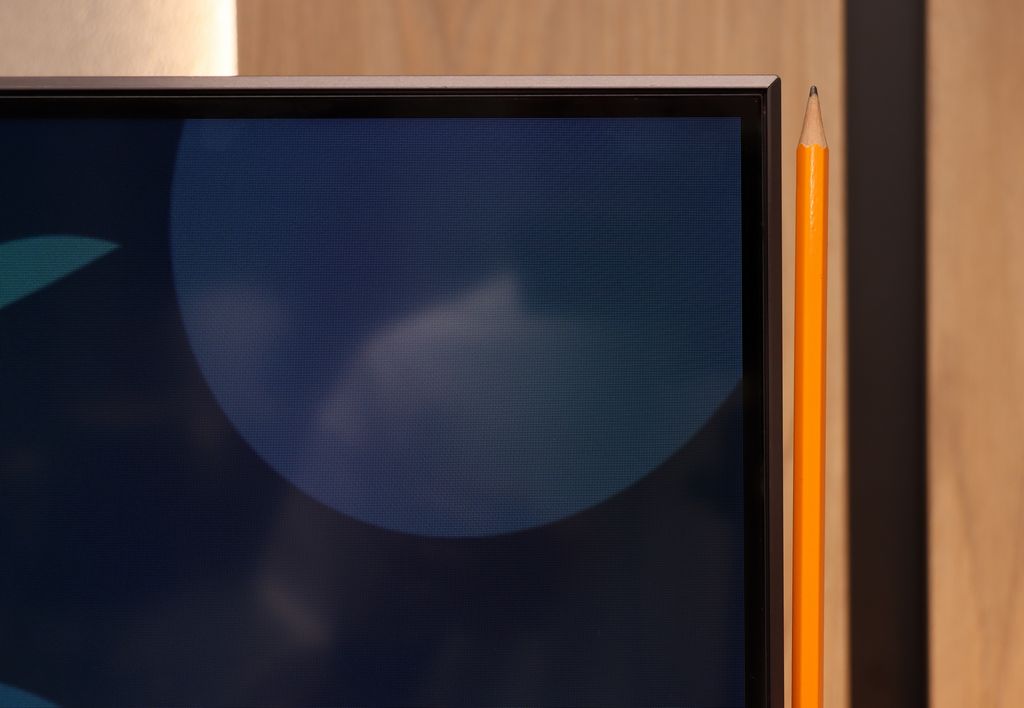
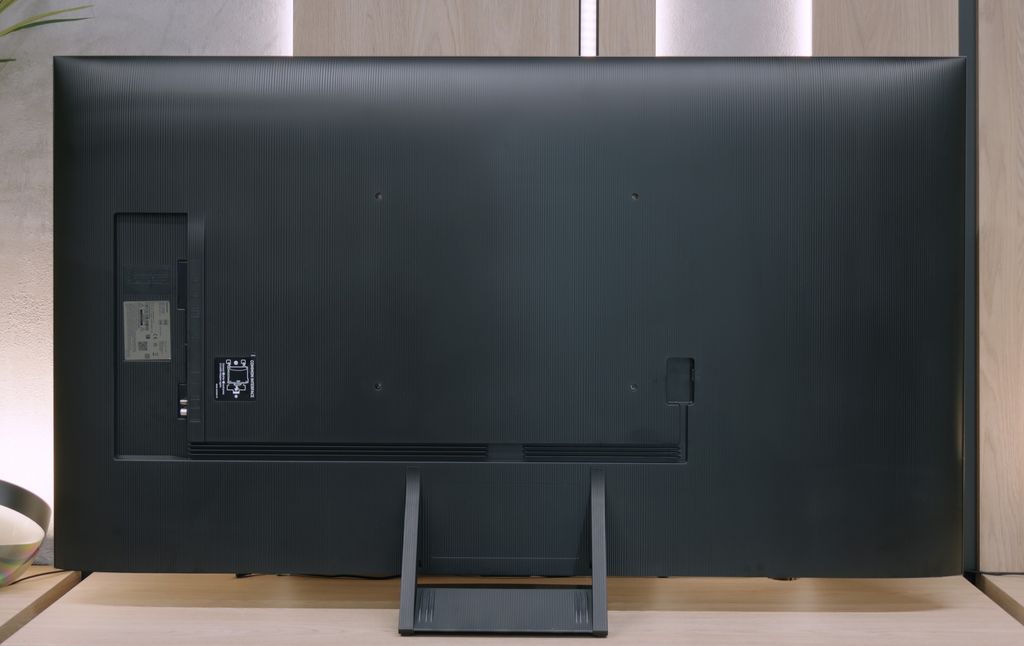

Contrast and black detail
7.6/10
6.8/10
Local dimming function: Yes, number of zones: 120 (12 x 10)
Local dimming function: Yes, number of zones: 88 (8 x 11)
Contrast:

Result
107,750:1

Result
27,100:1

Result
62,500:1

Result
8,750:1

Result
4,950:1

Result
34,100:1

Result
8,200:1

Result
32,500:1

Result
4,550:1

Result
3,800:1
Halo effect and black detail visibility:

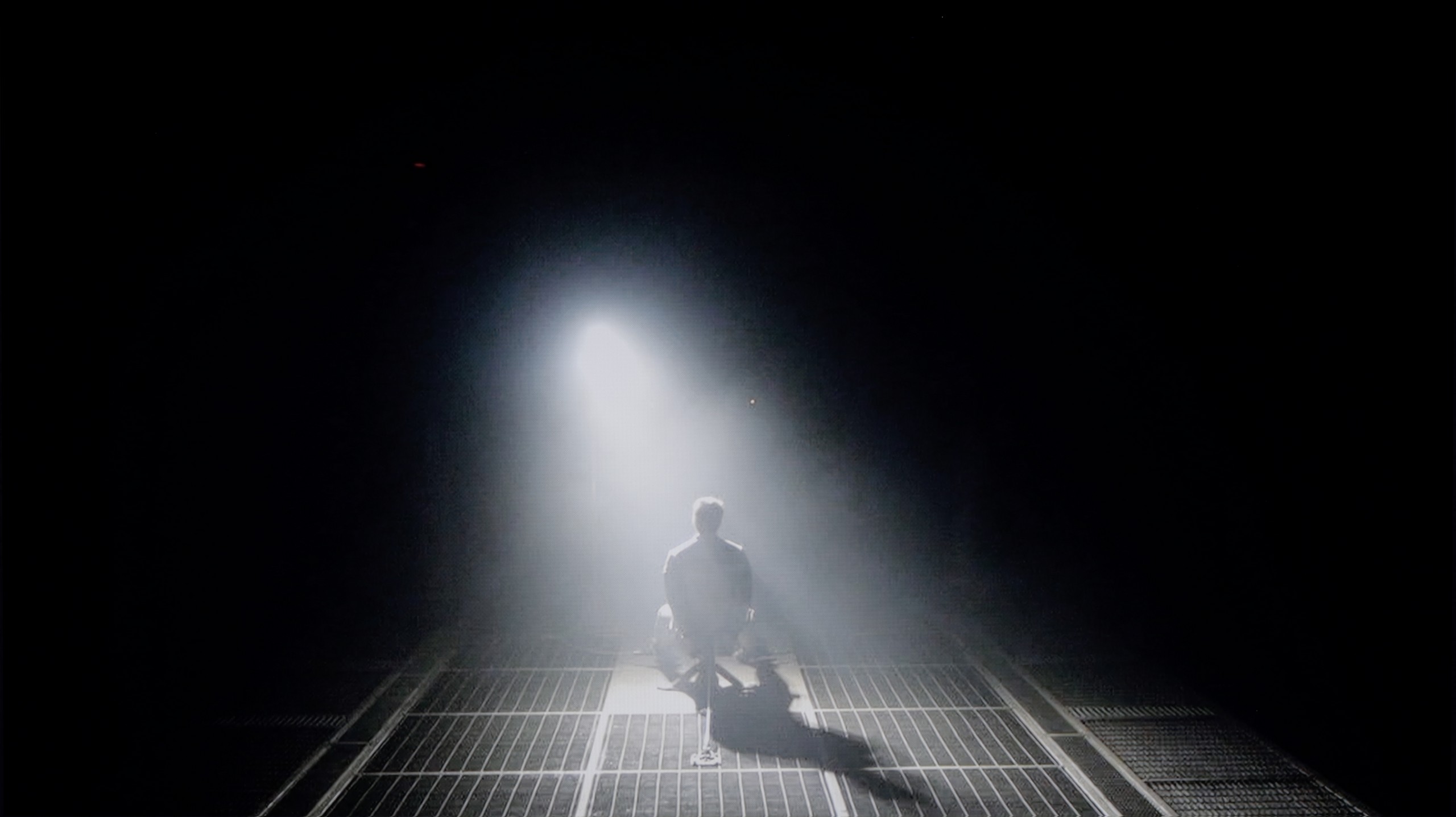
Samsung QN85D for 2024 is the first model from the NeoQLED series to use a VA panel, offering significantly better blacks than IPS/ADS technologies. The 55-inch version has 160 dimming zones, which may not be an impressive number compared to competing models from China. In larger sizes, the number of zones is greater, which naturally translates to better contrast. The contrast results are good, but certain limitations are evident.
With smaller elements on the screen, the limited number of zones causes issues – the TV either tries to maintain a high brightness level, resulting in a halo effect around objects, or it dims too much, as observed in the test scene from the Pioneer disc. Additionally, in the same scene where the TV showcased its highest capabilities (Oblivion) in contrast, it also has significant problems with light separation. You can see how the TV struggles to maintain the best black at the cost of detail in the whites. You can't have it all. Both of these effects impact the perception of contrast, making the performance weaker in more challenging conditions. However, compared to TVs without local dimming technology, the results are very positive and can be surprising.
QN80F is a representative of the Neo QLED series, meaning it is a television with Mini LED backlighting. Unlike its cheaper cousin, the QN70F model, the diodes here are placed directly behind the panel (instead of at the edges), which gives a solid advantage from the start when it comes to contrast control. In the 65-inch variant we tested, we counted 88 dimming zones – a result that may not be very impressive, but as it turned out, sufficient to achieve quite decent results.
In tests based on scenes from films such as Oblivion or The Meg, the QN80F performed well – blacks were deep, and the overall image consistency was eye-catching. However, in more demanding moments (e.g., scenes with a large number of bright details on a dark background), a halo effect appeared. This is where the limitation of the number of zones comes into play – bright elements could bleed around, and some details in dark areas became less visible. In one scene with a helicopter (The Meg), we even noticed slight brightness flickering, as if the television was trying its best to maintain visibility of the details at the expense of black depth.
However, these are not issues exclusive to this model – the halo effect or contrast drops in very complex scenes are something that most Mini LED televisions struggle with, even the more expensive ones. In its class, the QN80F still performs positively and offers noticeably better contrast than the QN70F model with edge lighting. For most users, this will be a level more than sufficient – although not perfect.
HDR effect quality
5.6/10
5.8/10
Luminance measurements in HDR:

Result
999 nit

Result
335 nit

Result
562 nit

Result
182 nit

Result
855 nit

Result
799 nit

Result
533 nit

Result
717 nit

Result
245 nit

Result
656 nit
Scene from the movie “Pan” (about 2800 nits)


Scene from the movie “Billy Lynn” (about 1100 nits)


Static HDR10


Dynamic: HDR10+
Dynamic: HDR10+


HDR luminance chart:
SAMSUNG QN80F
Luminancja HDR
Luminance of RGB colors
Samsung Neo QLED QN85D / QNX1D
Luminancja HDR
Luminance of RGB colors
Samsung QN85D leaves us with mixed feelings regarding HDR quality. It can shine in synthetic luminance tests, reaching even 1000 nits – which makes scenes like those from 'The Meg' or the start of 'Life of Pi', where the screen is all bright, look truly impressive. However, in practice, the device has its limitations – especially when smaller bright elements appear on the screen. In such moments, brightness noticeably drops, and the HDR effect loses its punch. At brightness levels around 200-300 nits, the magic of HDR simply fades away, not delivering spectacular effects. However, it’s not that the television completely disappoints – coverage of the DCI-P3 colour gamut at 95% is quite decent, although it doesn’t stand out against the best competitors. Colours are well-rendered, but it's clear that HDR could make a bigger impression if brightness could be better controlled.
QN80F is quite a bright screen – in synthetic tests, it reached nearly 1000 nits, which allows for reasonable expectations of HDR content. And indeed, in many scenes, the TV can truly shine. Sequences with a lot of light – like shots from the movie Life of Pi or wide, bright surfaces in The Meg – look impressive. Brightness stays around 700 nits, which provides a solid effect, enough to feel the true "HDR magic." Unfortunately, not every scene looks this good. In content with small, bright details on a dark background, like in Sicario 2, the TV can struggle – it can significantly dim individual elements, sometimes to the point where they disappear from the image. This is a result of the limited number of dimming zones, forcing the device into compromises: either stick to inky blacks or sacrifice some detail. QN80F usually chooses the former. As a consolation, it offers quite decent coverage of a wide color palette – DCI-P3 at 93%. It's not the highest score on the market, but it's more than enough for most content on streaming platforms.
Factory color reproduction
6.3/10
6/10


Factory Mode
After calibration


Factory Mode
After calibration
Samsung QN85D TV has been tested in the best available mode – Filmmaker. While one might expect its name suggests a mode perfectly suited for films, unfortunately, it has several significant issues.
When it comes to white balance for HD content, there is a noticeable dominance of red and blue, which makes the entire image take on pinkish hues – this is also confirmed by Colour Checker tests. This effect disturbs the naturalness of skin tones and many other elements, which is particularly evident in more demanding scenes. Initially, the white balance for 4K HDR content seems correct, but at the end of the graph, there is a significant spike in blue hues, affecting the final image quality and making the colours appear unnatural.
The gamma brightness characteristic is also not ideal – although it generally stays close to the reference value, there is a slight drop below 2.4, which can impact the perceived depth of shadows. The EOTF curve responsible for 4K content does not perform any better. There is a clear boost compared to the reference curve, leading to excessive brightness in some areas, thus losing the cinematic quality that the Filmmaker mode should provide. While it might initially seem that the effect is cinematic, unfortunately, the number of errors in colour and brightness reproduction is too significant to call it flawless.
We always test TVs in the best available factory mode – for the Samsung QN80F, this is the Filmmaker mode, and indeed, it provides the settings closest to the creators' intentions. However, this doesn’t mean everything looks perfect. In SDR content, the biggest issue was an unbalanced white balance – slight deficiencies in green and a noticeable excess of red led to noticeable colour errors, and one could say the screen had a pinkish hue. This was clearly visible in the colour checker test, where colours “escaped” outside their target fields – to such an extent that a sensitive viewer's eye could catch it even without the help of a meter.
In HDR content, the white balance was much better, but another issue arose – brightness management. The EOTF curve caused an overly bright image most of the time, which affected the perception of contrast and made the screen slightly “flicker” during dynamic changes in light. We’ve already discussed this in the paragraphs about black levels and HDR. Fortunately, Samsung offers users plenty of options. The QN80F features a rich set of calibration options, including a 20-point white balance – which is why we decided to check what this TV is really capable of after a proper calibration.
Color reproduction after calibration
7.9/10
8.3/10




After professional calibration of the Filmmaker mode on the Samsung QN85D television, a significant improvement is noticeable, especially for HD/SDR content. The white balance has been completely free of major errors, and the brightness characteristics for this type of content have been significantly adjusted, allowing for a more natural and realistic image. Television, YouTube films, and other HD materials now look much better, with appropriately balanced colours and without the exaggerated hues that previously marred the experience.
However, the biggest issues arise with 4K HDR content. Despite the calibration, it's hard to speak of significant improvement in white balance here – the differences are cosmetic rather than essential. Brightness, governed by the EOTF curve, seems to be set according to the reference level in synthetic tests at first glance, but has its limitations during actual viewing in films. When analysing the EOTF curve in real film scenes, it becomes clear that the television struggles to maintain consistency in brightness. The effect is that mixed scenes still have their darkest elements boosted, leading to exaggerated contrasts, and completely dark scenes remain too dark, which negatively affects the visibility of details.
After conducting a thorough calibration, it was possible to bring most image parameters to a really good level. The white balance in both SDR and HDR presents itself almost perfectly – the image is natural, neutral, and free from the previously noticeable redness. Colours have gained depth, and the overall visual experience has become more pleasant and cohesive. It was also possible to partially manage brightness, which in the factory version could cause issues. The EOTF chart shows that the television performs much better with brightness after calibration – there is no longer excessive dimming of certain elements. In films, it can still be noticed that the QN80F has a tendency to slightly brighten the smallest bright details – this is already a consequence of the device's construction and the limited number of dimming zones. In short: not everything can be overcome, but what was possible has been improved. After calibration, the QN80F makes a really good impression, looking simply more mature and professional.
Smoothness of tonal transitions
7.6/10
9/10





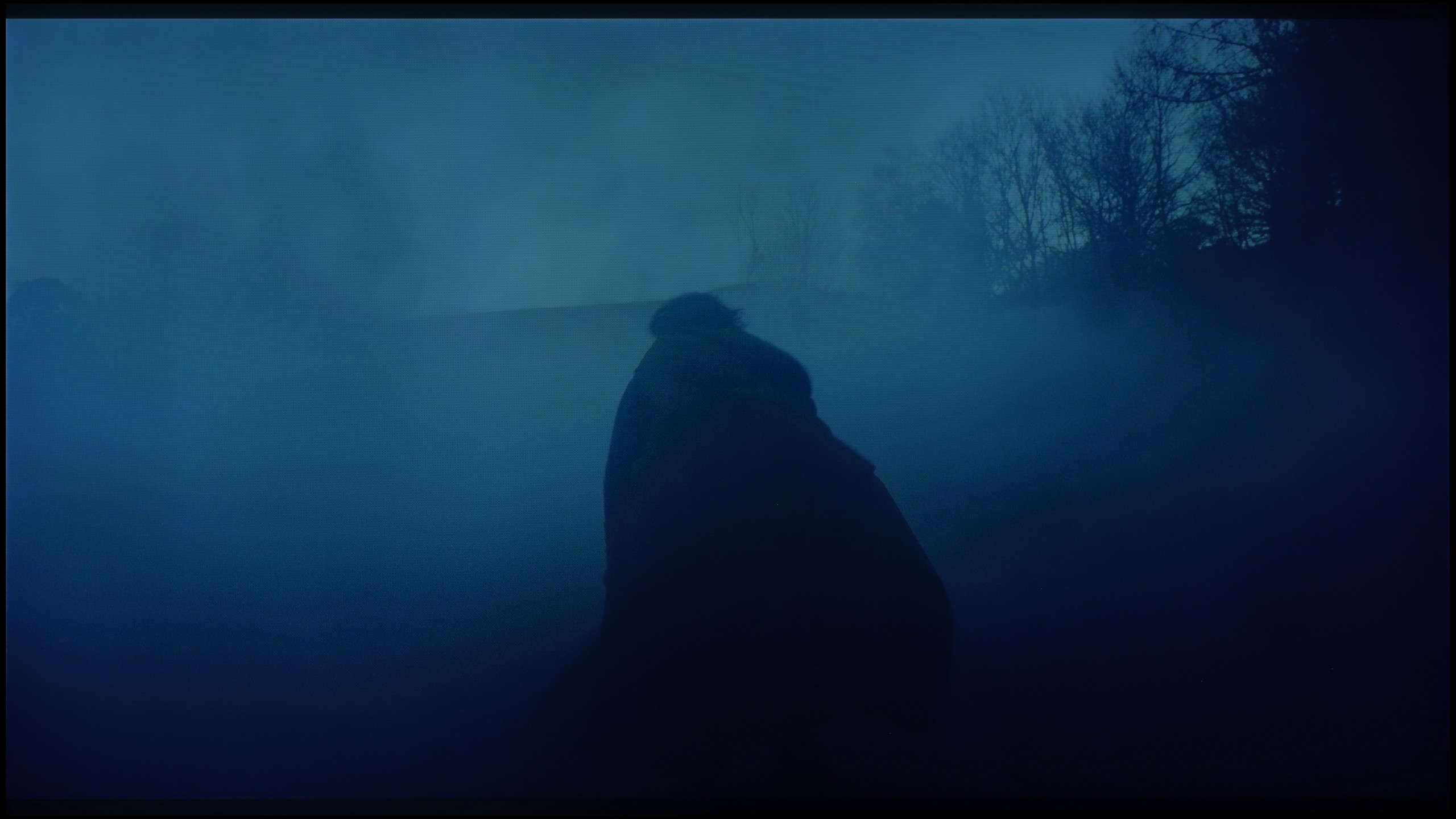

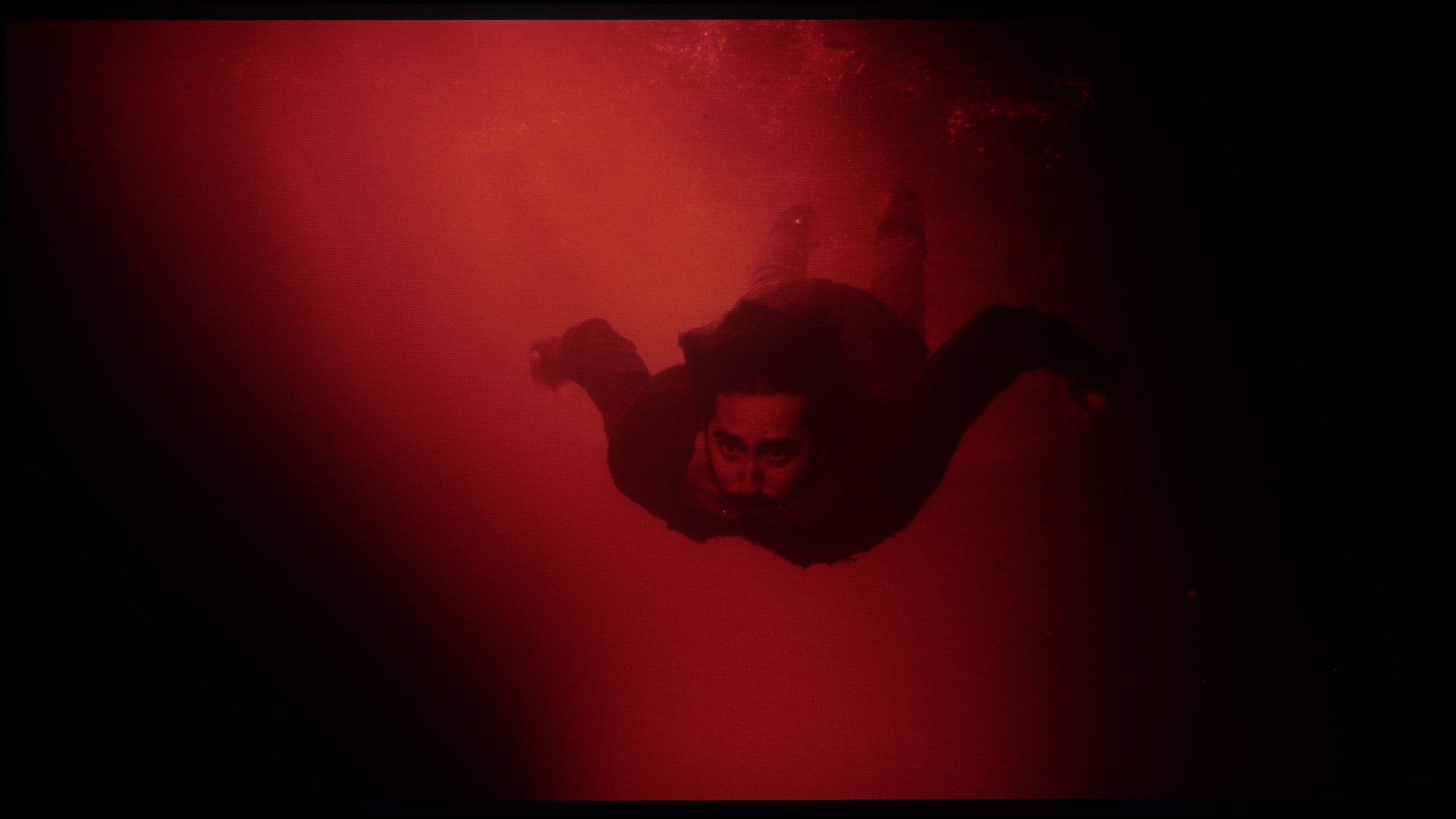




When it comes to tonal transition fluidity on the Samsung QN85D television, it’s generally very good. The tonal transitions are smooth, and there are no significant artifacts. However, more demanding users may notice some issues in certain scenes. For example, when blending darker colours, like in the scene with the red sea, subtle shortcomings can be observed. Similarly, in the case of lighter colours – the scene from the film 'The Martian' shows slight gradation issues, leading to subtle but noticeable transitions between shades. Despite these minor shortcomings, most users should be satisfied. The results are of a high standard and in most cases provide smooth, natural transitions between colours.
In this regard, the QN80F really delivers. Transitions between colours are smooth, nothing tears, and there are no annoying bands in the sky or strange spots in the shadows. Movie scenes in darker tones performed particularly well – and that's where most televisions start to struggle. If you really focus, you might notice slight banding in the brightest areas, but that's really stretching it. In everyday viewing, no one should have a problem with this. To put it simply: the tonal transitions are so good that you can forget about them – and just enjoy the movie.
Image scaling and smoothness of tonal transitions
7/10
7/10
Smooth transition function


Image without overscan on the SD signal

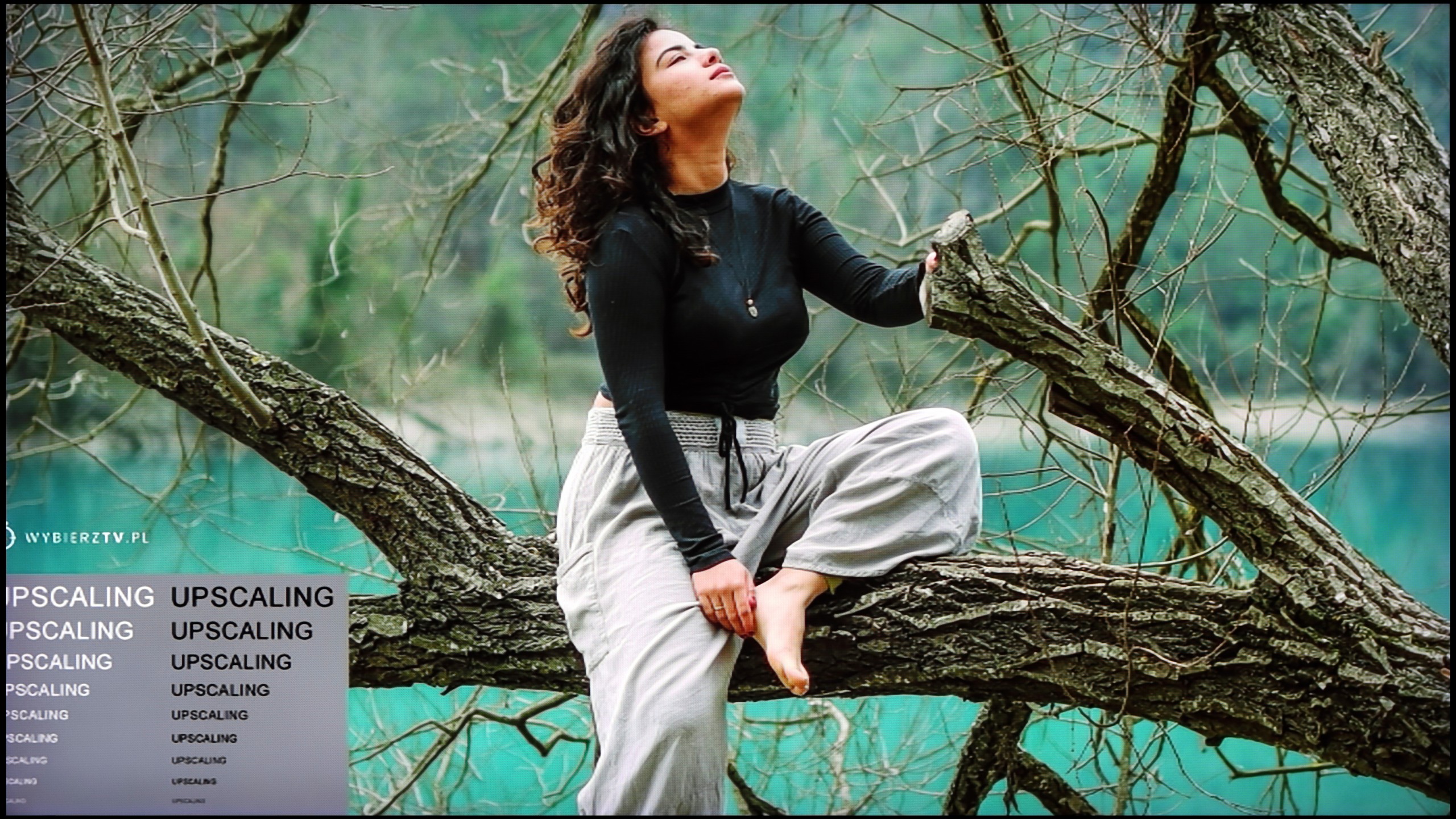
When checking the fluidity of tonal transitions in low-resolution materials on the Samsung QN85D television, it’s worth noting the noise reduction feature, which significantly improves problematic tonal transitions. On the other hand, this feature also has its downsides – it removes film grain, which is an important element of many productions, giving them authenticity, and it can also soften the image. This may appeal to those who prefer a smoother picture; however, for lovers of the authentic look of films, using this feature should be considered carefully.
Regarding image scaling, the television performs very well. The model's figure is presented correctly, without noticeable distortions, and the branches in the background do not have excessive artificial sharpness, which is often a problem when scaling lower resolution materials. The high capabilities of the image processor are evident here, which can effectively process lower quality materials, ensuring good final quality.
If you notice strange colour transitions or unwanted artefacts while watching lower quality materials – for example from YouTube – it's worth checking the settings and enabling the noise reduction feature. In our opinion, the best setting is at the 'medium' level – it effectively smooths out problematic colour transitions without overly blurring the entire image. However, it's important to know one thing: this option tends to remove film grain. If someone values preserving that effect (e.g., in older films), it's better to simply turn it off – regardless of the level, the grain always disappears.
Regarding resolution scaling (also known as upscaling), Samsung – as usual – performs very well in this area. The QN80F doesn't quite match the top models costing tens of thousands, but for its price class, it performs impressively. Materials of very poor quality (e.g., from SD television or older video files) are noticeably improved and look surprisingly decent. The only noticeable downside is the typical Samsung issue with overscan – which is a slight cropping of the image edges at very low resolutions, such as 576p.
Blur and motion smoothness
7.5/10
7.5/10

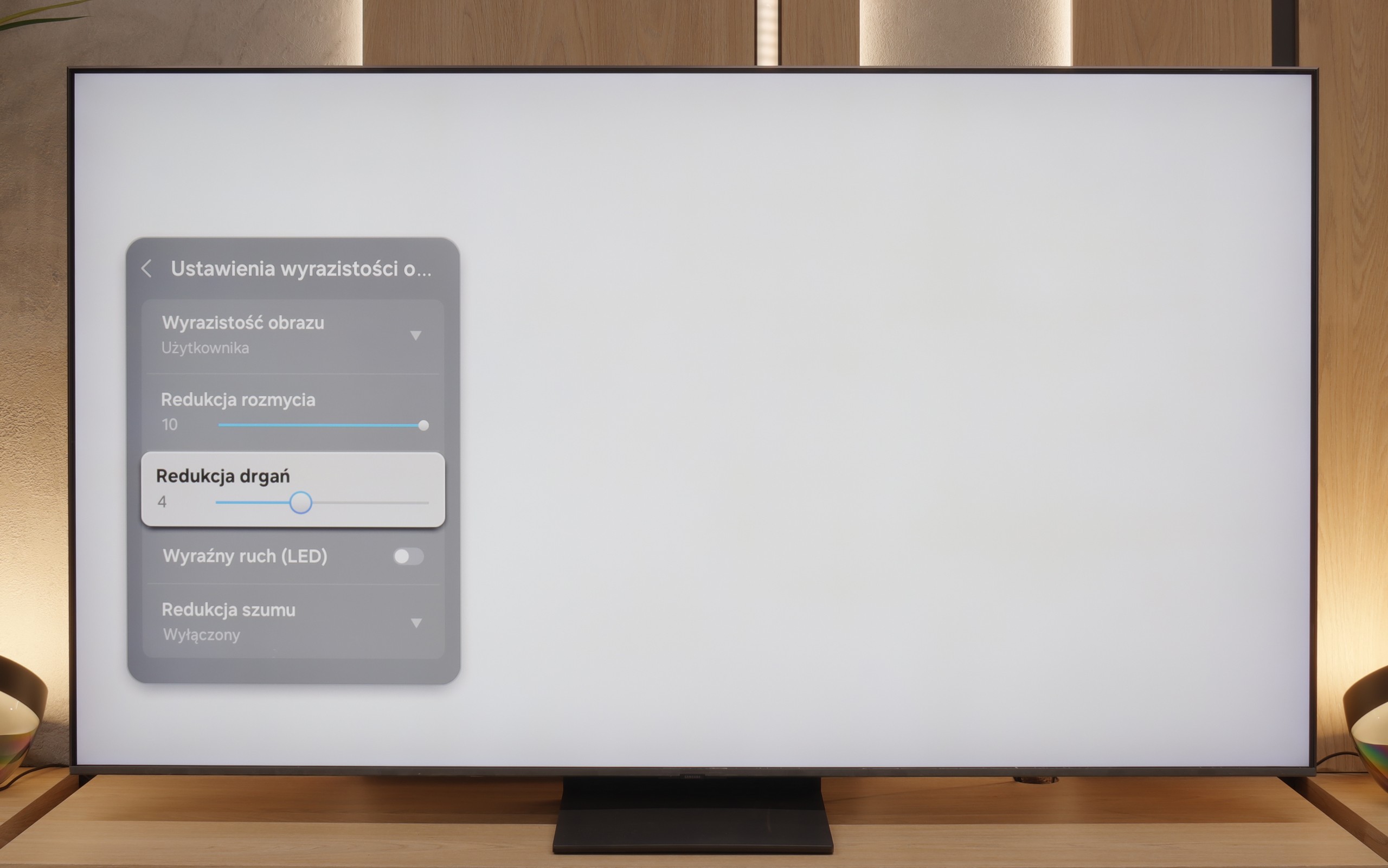
Blur (native resolution, maximum refresh rate):




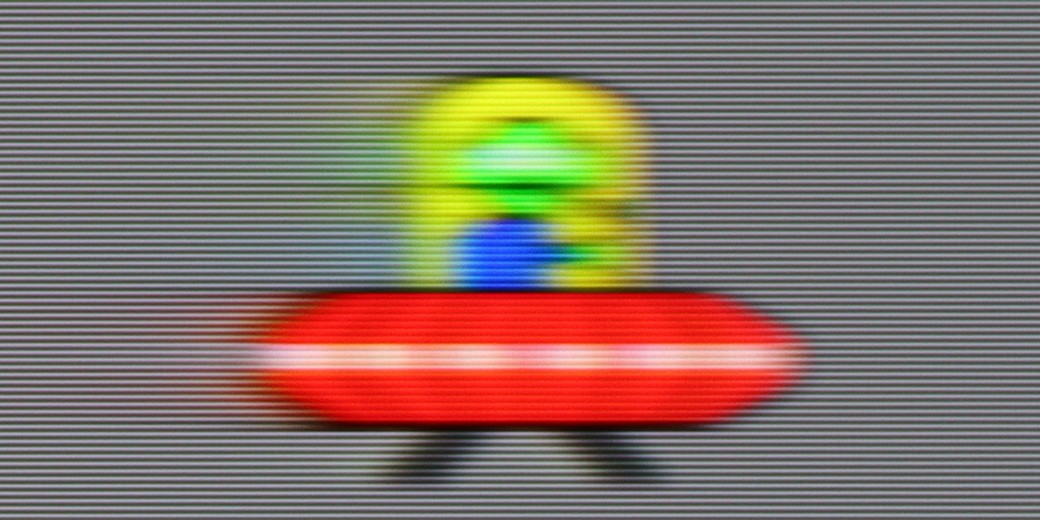

Blur (BFI function enabled):
Image flickers in this mode
Image flickers in this mode

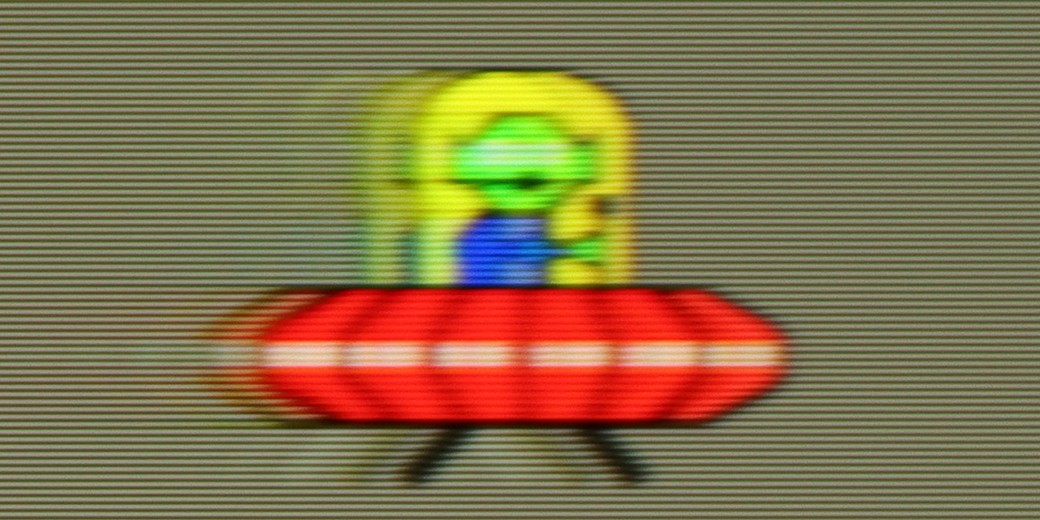

Samsung QN85D TV is equipped with a 120 Hz refresh rate panel, which should satisfy both gamers and sports enthusiasts by offering a smooth and dynamic image. There are options to enhance fluidity, such as the blur and judder reduction feature, which allows precise motion fluidity adjustments on a 10-point scale. The blur reduction increases the sharpness of fast-moving objects, making action scenes more readable, while judder reduction smooths out motion, eliminating the “judder” effect. Ghosting is generally well controlled, though minor imperfections can be visible in more demanding scenes, especially when an object moves against a dark background. Additionally, the TV offers a BFI (Black Frame Insertion) feature at a 60 Hz refresh rate, which can significantly improve motion fluidity experience, although at the cost of image flicker, which might be bothersome for some users.
QN80F is truly a “fast” TV. The panel used offers a refresh rate of up to 144 Hz, which in practice means that the screen keeps up with the action – whether we’re watching a movie, playing games, or browsing dynamic content online. The image doesn’t stutter, isn’t overly blurred, and everything simply looks smooth and pleasing to the eye. Of course, the manufacturer hasn’t forgotten about cinema fans – in the settings, we find an option to adjust motion smoothness, allowing us to tailor the effect to our own preferences. You can leave a more “frame-y” look (for those who enjoy the classic film vibe) or crank up the smoothness to a higher level to achieve a theatrical smoothing effect. Importantly, the choice is ours. Watching movies and playing on the QN80F is just plain fun.
Console compatibility and gaming features
9.5/10
8.2/10
- ALLM
- VRR
- VRR range48 - 120Hz48 - 144Hz
- Dolby Vision Game Mode
- Correct implementation of HGIG
- 1080p@120Hz
- 1440p@120Hz
- 4K@120Hz
- Game bar

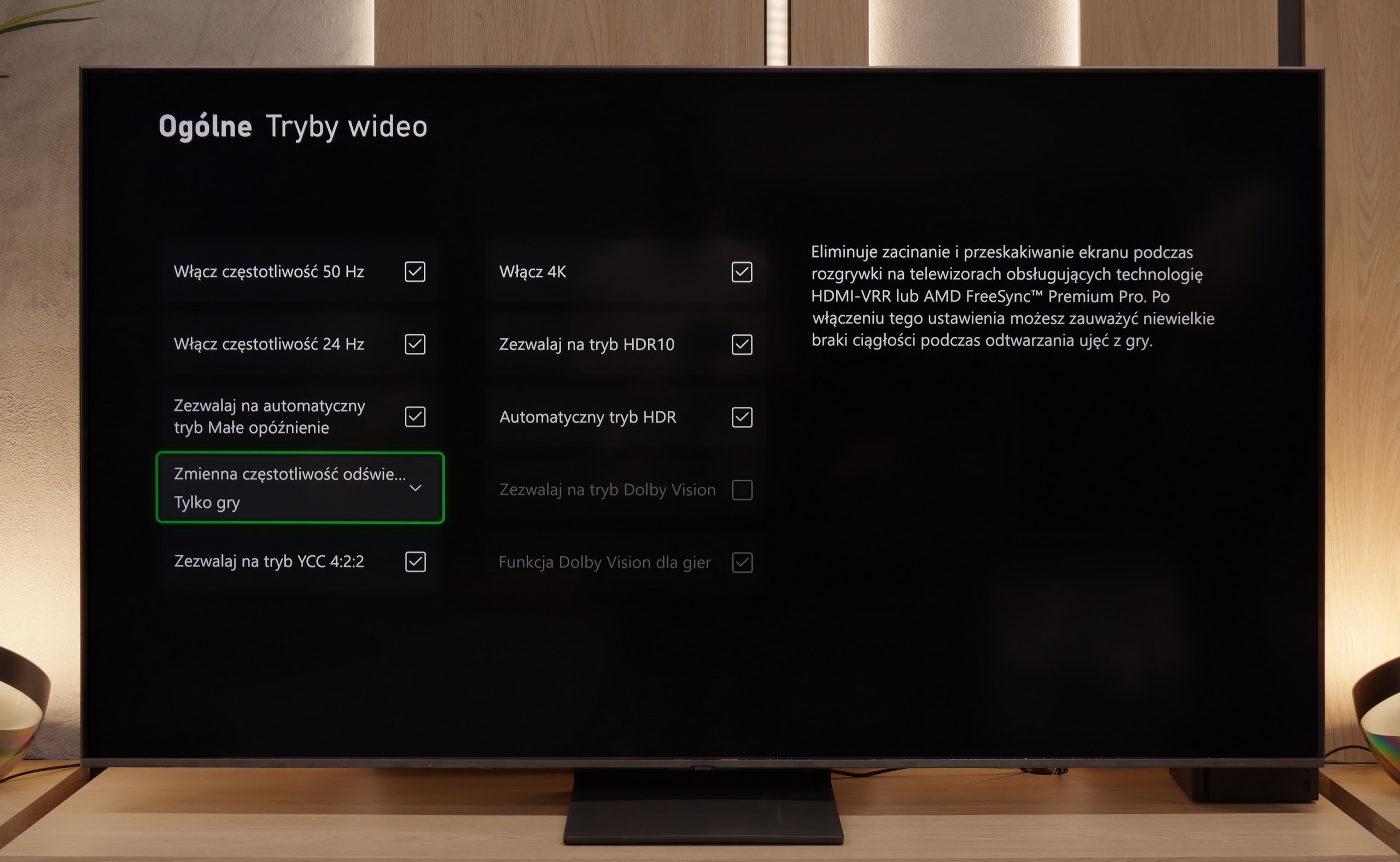



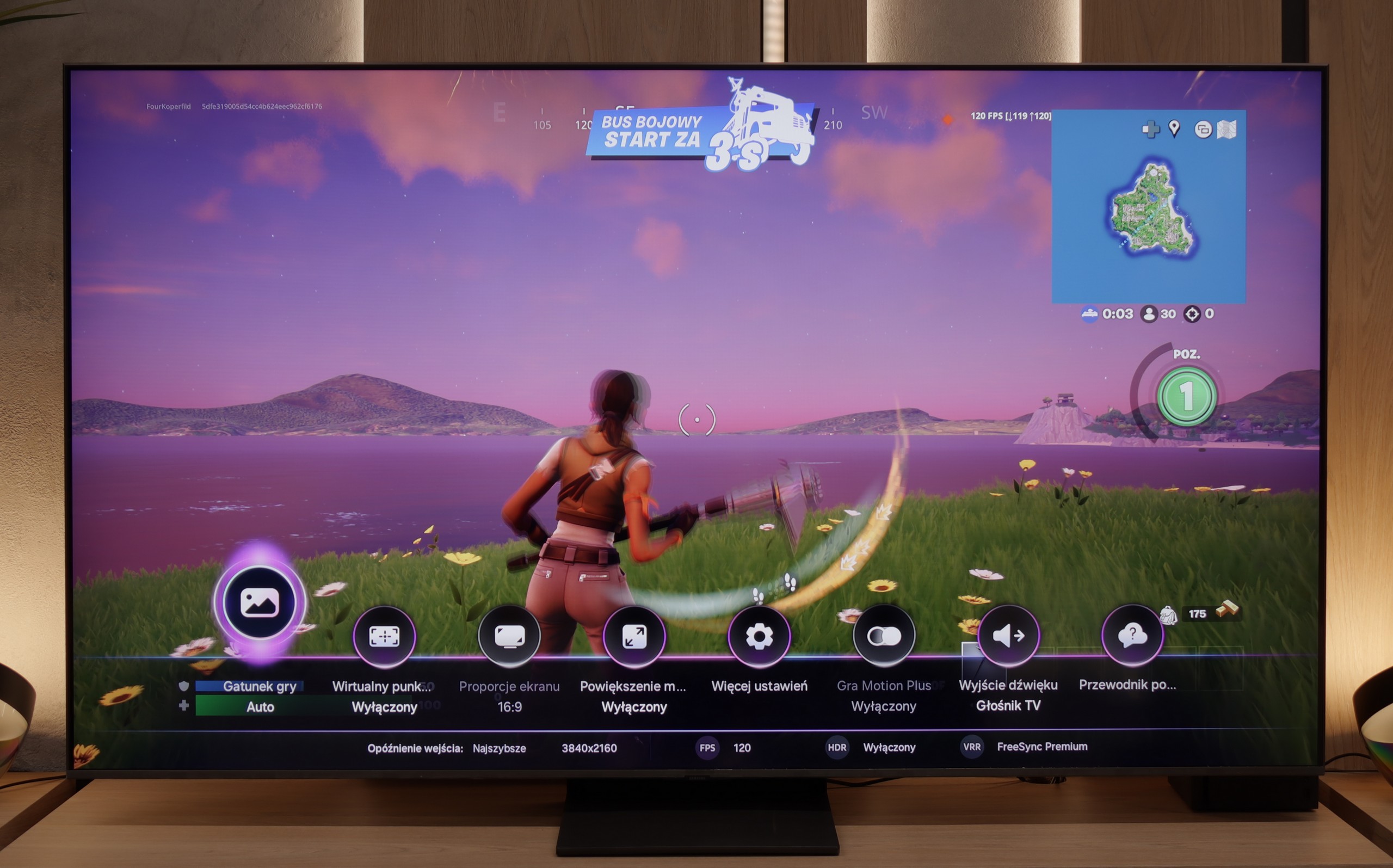

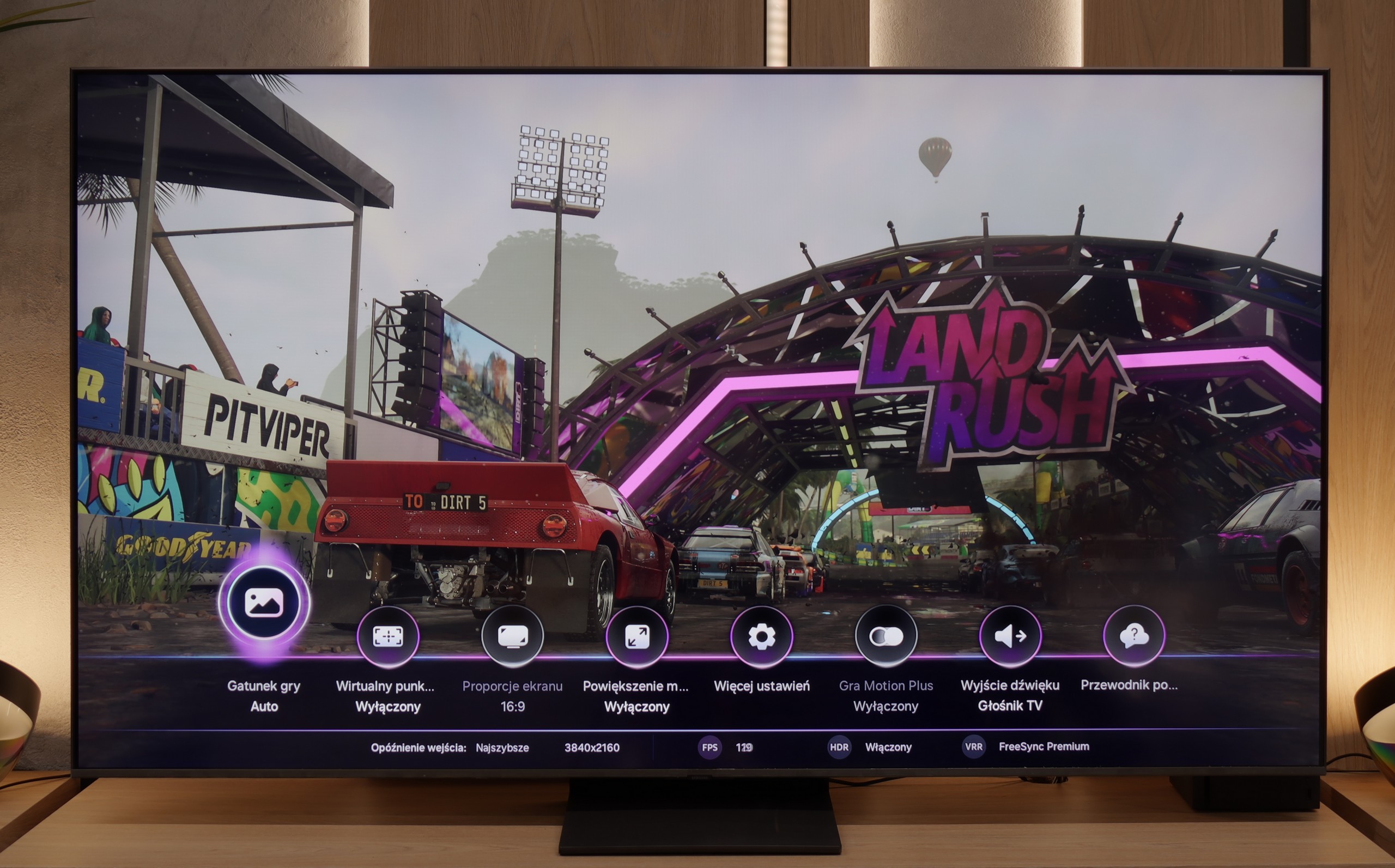
The Samsung QN85D television is an excellent choice for gamers, offering a wide range of features that enhance the gaming experience and make it even more exciting. With a 120 Hz refresh rate panel, the image is incredibly smooth, which is crucial during dynamic scenes in action games. The television also boasts low input lag, allowing for nearly instant reactions to player commands, which translates into better control over characters and events on the screen.
In addition, the QN85D Samsung supports VRR (Variable Refresh Rate) and ALLM (Auto Low Latency Mode) technologies, which optimise image smoothness and reduce delays by automatically adjusting the television to the needs of gamers. Moreover, the Xbox app allows for cloud gaming without the need for a console, which is a big plus for those who want to enjoy their favourite titles without additional hardware – a feature that sets Samsung televisions apart.
The Auto Motion Plus Game feature is another aspect worth highlighting. This motion smoothing technology creates the illusion of more frames per second – as a result, games at 30 fps appear smoother, resembling gameplay at 45 fps, while games at 60 Hz come closer to 90 Hz. Most importantly, this feature does not introduce significant lag, ensuring that gaming comfort is not compromised. This allows gamers to enjoy a smoother image without compromising responsiveness.
Samsung QN80F is a TV that delivers on almost every front when it comes to gaming. We have a 144 Hz panel, four fully-fledged HDMI 2.1 ports, support for gamers in the form of variable refresh rate (VRR), auto low latency mode (ALLM), and even one of the best-designed game bars on the market. The cherry on top is the motion smoother, which – as the only one in the world – works in games without significantly increasing input lag. Sounds like an almost perfect TV for gamers? And indeed, it’s almost that.
As usual, Samsung does not support Dolby Vision in gaming, but that’s no surprise anymore. However, what is much more surprising is that... the HGIG feature has disappeared – which is a system that allows a console (e.g. PlayStation 5 or Xbox Series X) to precisely match HDR tone mapping to the capabilities of the TV. In the latest firmware update for the 2025 models, this option simply vanished. It looks more like a bug than a deliberate move, but it must be honestly noted that as of the writing of this review, the HGIG feature is simply absent.
And it’s this one missing feature that turns the QN80F from an almost perfect gaming TV into a “nearly” perfect device. It’s a pity – because everything else indicated that Samsung could once again set the bar very high in this generation.
Input lag
9.9/10
9.8/10
SDR
HDR
Dolby Vision
Samsung QN85D impresses when it comes to input lag value. The television achieves outstanding results – below 15 ms for 60 Hz content and around 10 ms for 120 Hz content. This allows gamers to enjoy instantaneous responses to their actions, especially in dynamic games where every millisecond counts. Such low input lag makes gameplay more responsive and natural, enhancing the overall experience while playing.
The QN80F doesn't disappoint when it comes to response time. The input lag for 120 Hz content drops below 10 ms, which can be considered an almost perfect result – it's hard to expect more in this class of televisions. Gaming is smooth, responsive, and without delays that could annoy even the most sensitive players. For 60 Hz material, the lag is higher, around 19 ms, but this is a completely natural phenomenon and still falls within comfortable limits.
Compatibility with PC
7.6/10
8.8/10

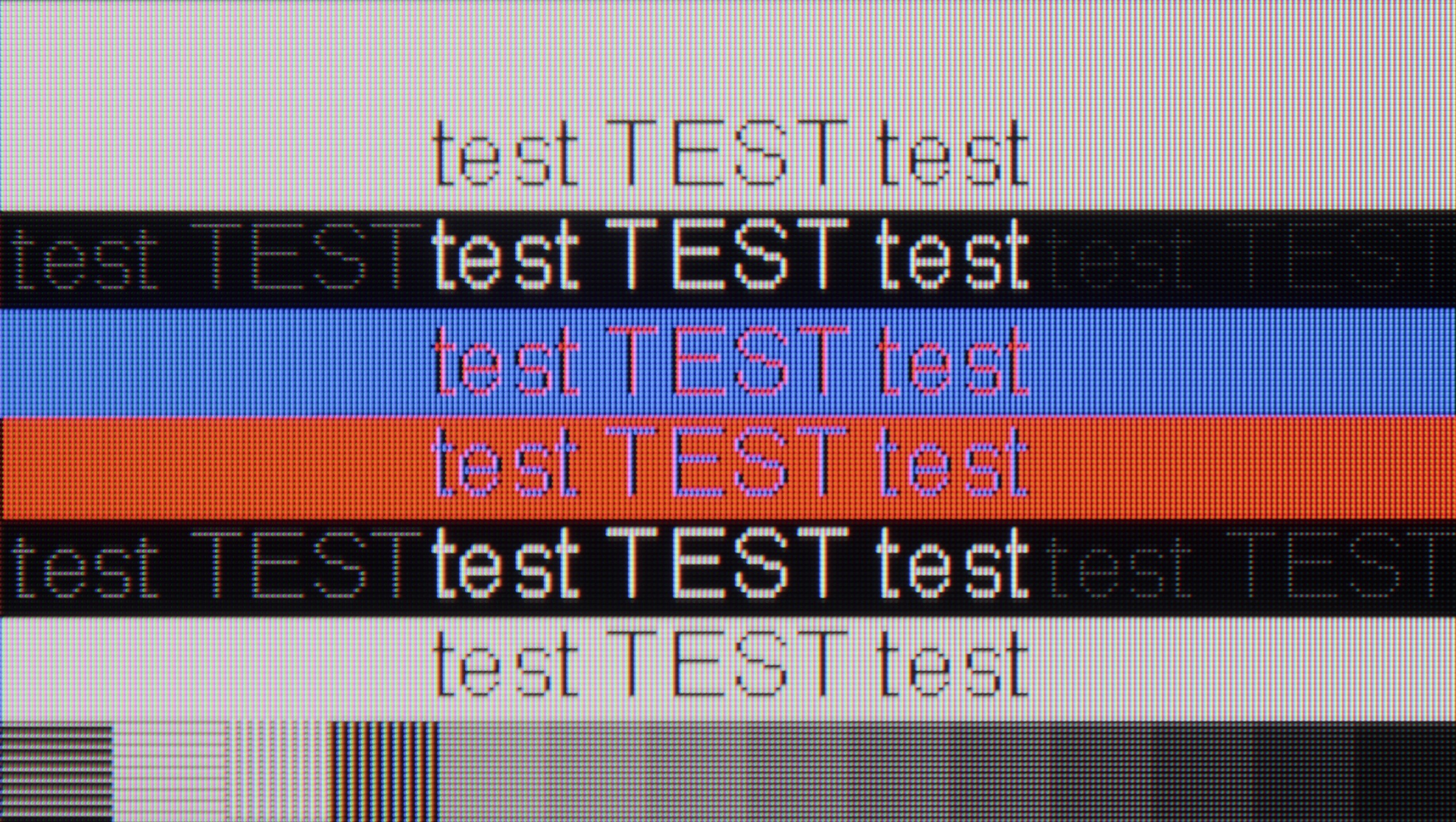
Samsung QN85D could be a good option as a computer monitor. Thanks to support for chroma 4:4:4 (available only in "Game" mode), text on the screen is clear and easy to read, which is crucial for those working with word documents or spreadsheets. A major advantage of this model is its exceptionally low input lag in "PC" mode – just 9 ms, which is really impressive and provides high fluidity and responsiveness, making it suitable for both work and gaming. However, there are some drawbacks. When displaying fonts on a dark background, an issue arises – when zooming in on an image, it can be seen that the horizontal lines are darker than the vertical ones. This is due to the fact that the sub-pixels in those areas do not light up fully, which may be a result of oversight on the manufacturer's part in optimising the algorithm responsible for displaying thin lines. As a result, the quality of text on a dark background is not ideal. Despite this, the television still remains a very good choice as a PC monitor, especially considering the low input lag and support for chroma 4:4:4.
Playing on the QN80F with a computer connected is pure delight. The television works seamlessly with NVIDIA graphics cards (thanks to G-Sync support) and AMD (thanks to FreeSync Premium), and the 144 Hz refresh rate only enhances comfort during fast-paced gaming. Everything works right away, without unnecessary fiddling with settings – just as it should.
When it comes to work, it's very good as well. The readability of fonts is high, and texts look sharp and clear. With very thin horizontal lines, you might notice slight imperfections or shadows, but honestly – you have to take a good look. Unless, like us, you sometimes like to examine the screen with a magnifying glass… then you might spot something 😉.
Viewing angles
2.9/10
3.1/10
The Samsung QN85D television, due to its VA panel, has quite poor viewing angles. When viewed from the side, colours lose their intensity, and the image becomes noticeably less contrasted. This is a typical drawback of VA panels, which offer significantly worse picture quality when viewed from wider angles. However, directly in front of the television, the situation looks much better – the VA panel then provides deep blacks and better contrast, which is a big plus if the television is mainly watched while sitting directly in front of the screen.
QN80F, like most TVs with a VA panel, isn't impressive in terms of viewing angles. Just tilt a bit to the side, and you'll notice a significant drop in brightness and lost colour saturation. The image loses its "depth" and "vividness", and darker scenes may appear slightly washed out. However, this is a typical characteristic of VA panels, which offer significantly better native contrast compared to IPS panels in return. In short: you win some, you lose some. If you're sitting directly in front of the screen – there won't be any issues. But when watching together in a larger group, it's worth keeping this in mind.
TV efficiency during daytime
7.3/10
6.6/10

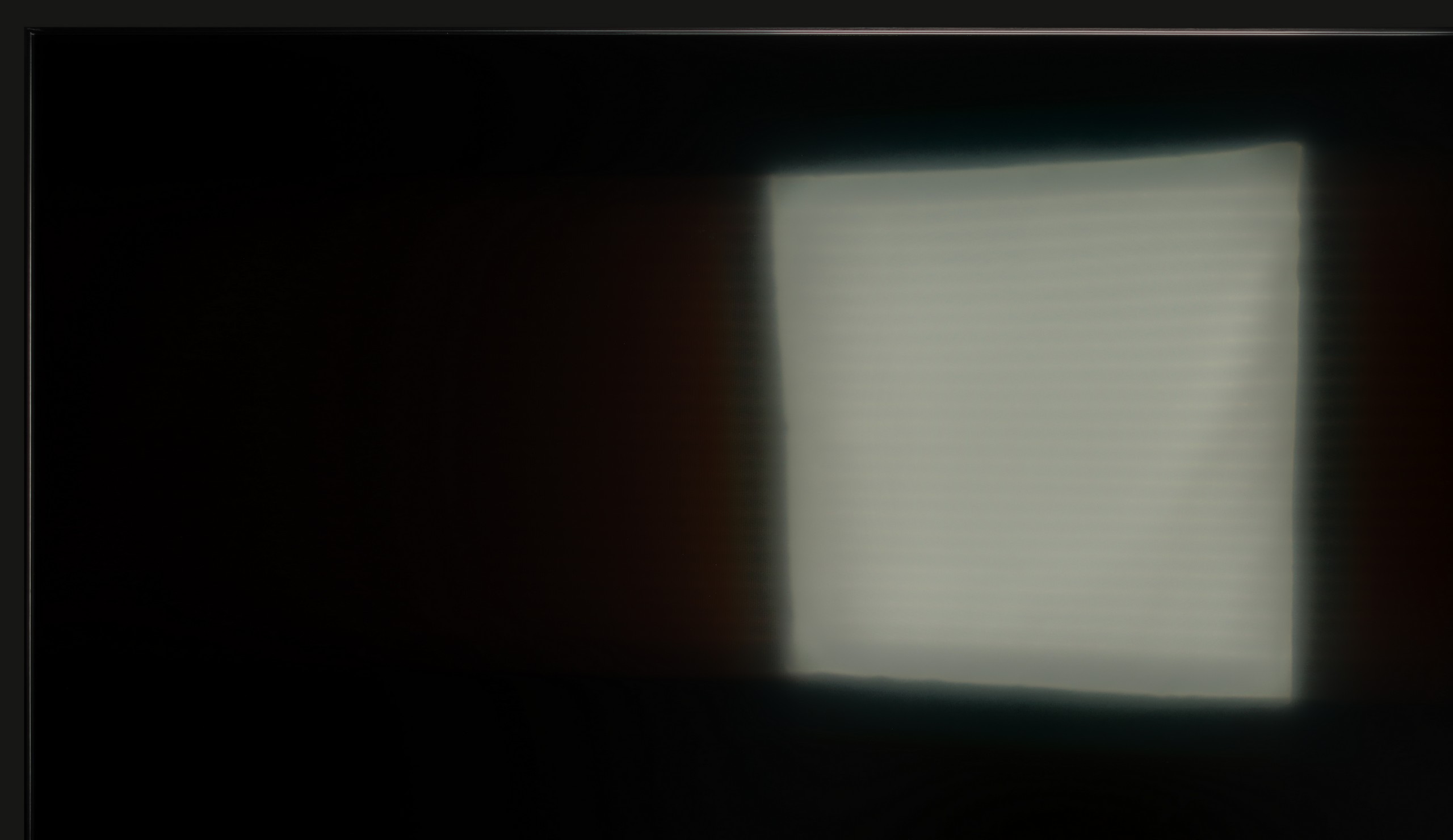


Matrix brightness
Average luminance SDR
SAMSUNG QN80F: 543 cd/m2
Samsung Neo QLED QN85D / QNX1D: 825 cd/m2
Samsung QN85D TV performs very well in bright daylight conditions. Although the satin panel moderately suppresses reflections, the brightness level of 825 cd/m² is truly impressive. Even in direct sunlight, the television handles itself very well, providing a clear and sharp image, and the largest external light sources do not pose a significant problem. This makes this model a good option for rooms with a lot of natural light.
QN80F is really a bright television. The average brightness in SDR material is around 550 nits, regardless of the scene, which practically means that you can comfortably watch content even in a well-lit room – and there’s no need to close the blinds every time we turn on a film. The new satin coating on the panel also deserves praise, as it handles glare much better compared to last year's QN80D. Reflections are less bothersome, and the screen maintains readability in various lighting conditions. It’s hard to nitpick here – the QN80F performs simply brilliantly during the day.
Details about the matrix
Subpixel Structure:


Panel uniformity:

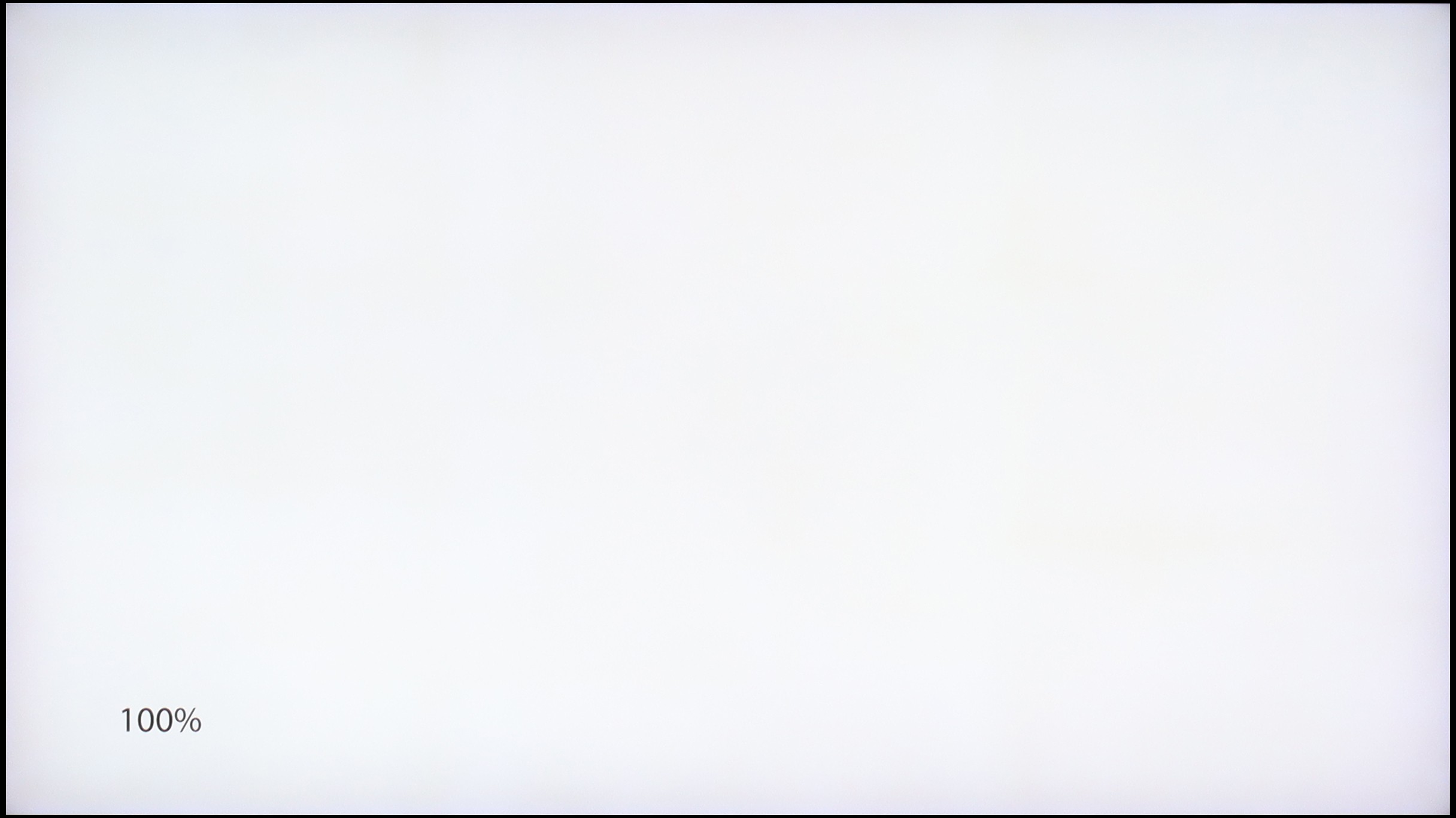
Samsung Neo QLED QN85D / QNX1D
SAMSUNG QN80F
TV features
7.4/10
7.7/10
- HDMI inputs0 x HDMI 2.0, 4 x HDMI 2.1 48Gbps0 x HDMI 2.0, 4 x HDMI 2.1 48Gbps
- OutputsToslink (Optical audio), eARC (HDMI), ARC (HDMI)Toslink (Optical audio), eARC (HDMI), ARC (HDMI)
- Network InterfacesWi-Fi 2.4GHz, Wi-Fi 5GHz, Ethernet (LAN) 100MbpsWi-Fi 2.4GHz, Wi-Fi 5GHz, Ethernet (LAN) 100Mbps
- TV receptionDVB-T, DVB-T2, DVB-S, DVB-S2, DVB-CDVB-T, DVB-T2, DVB-S, DVB-S2, DVB-C
Classic features:
- Recording to USB (terrestrial TV)
- Recording programming
- Picture in Picture (PiP)
- RF remote control (no need to aim at the screen)
- Backlit remote control
- Teletext
- Audio only mode
- Possibility to connect Bluetooth headphones to the TV
- Possibility to simultaneously use Bluetooth headphones and the TV speaker
Smart features:
- AirPlay
- Screen mirroring (Windows Miracast)
- Wyszukiwanie głosowe
- Voice search in native language
- Ability to connect a keyboard and mouse


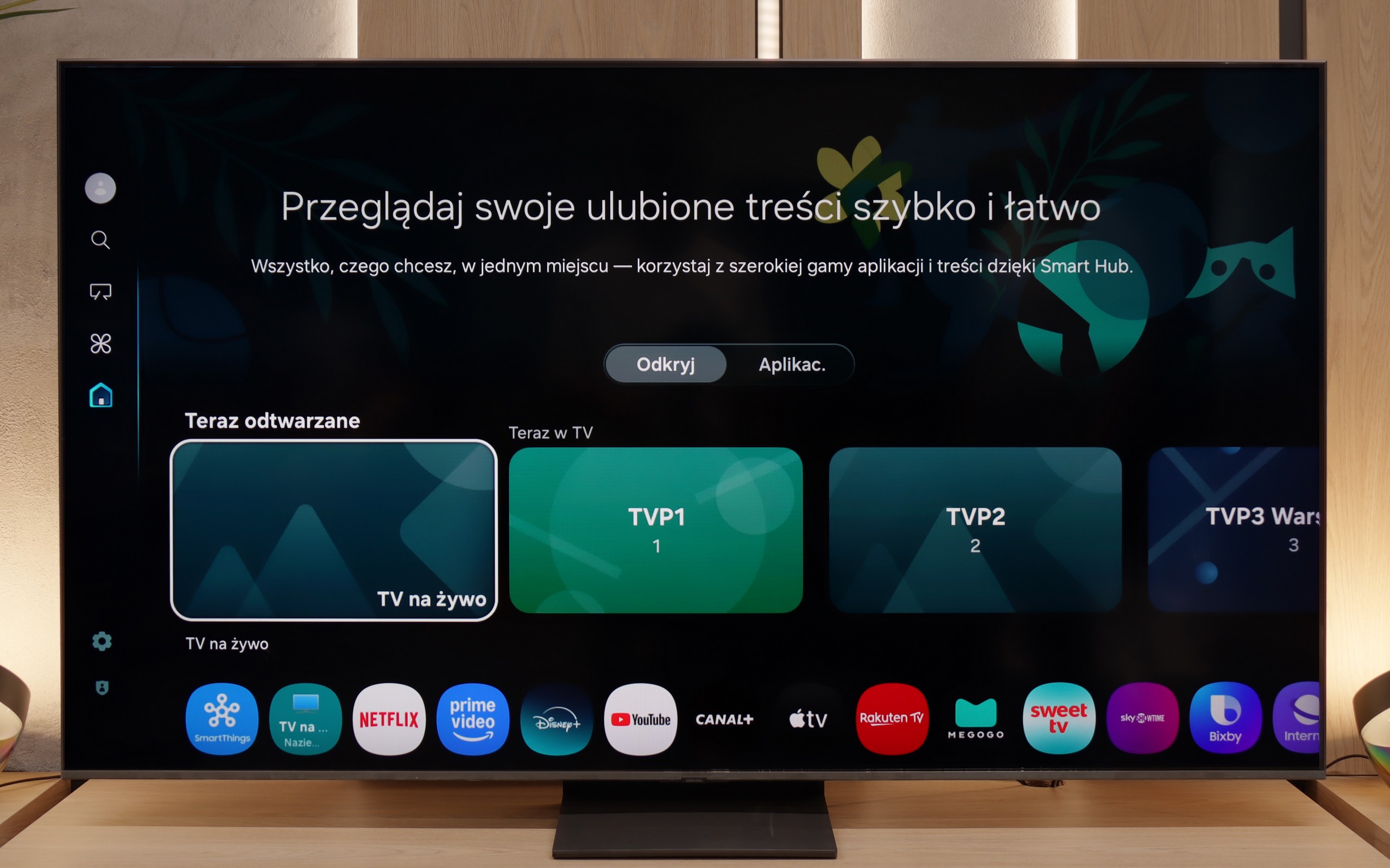
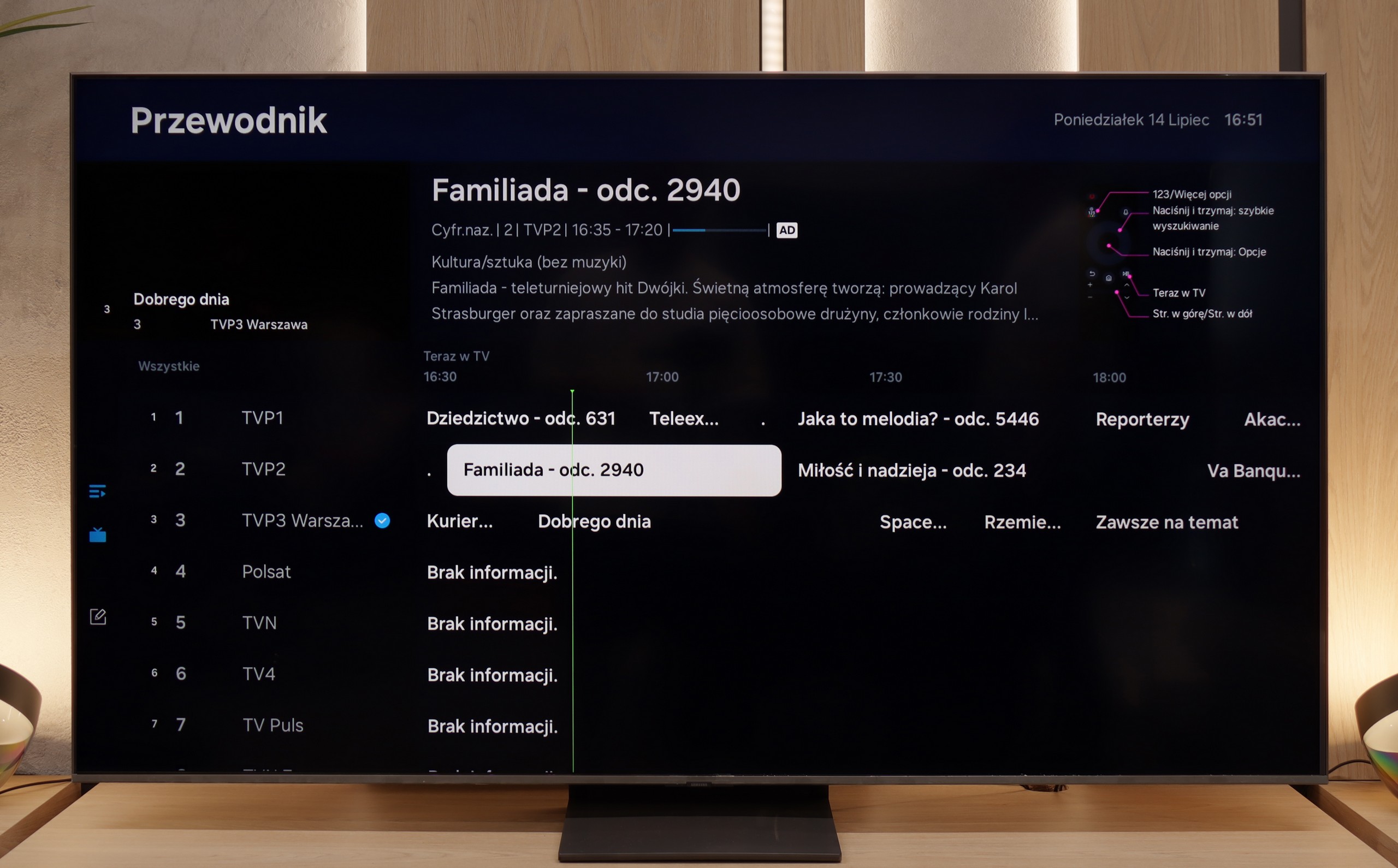
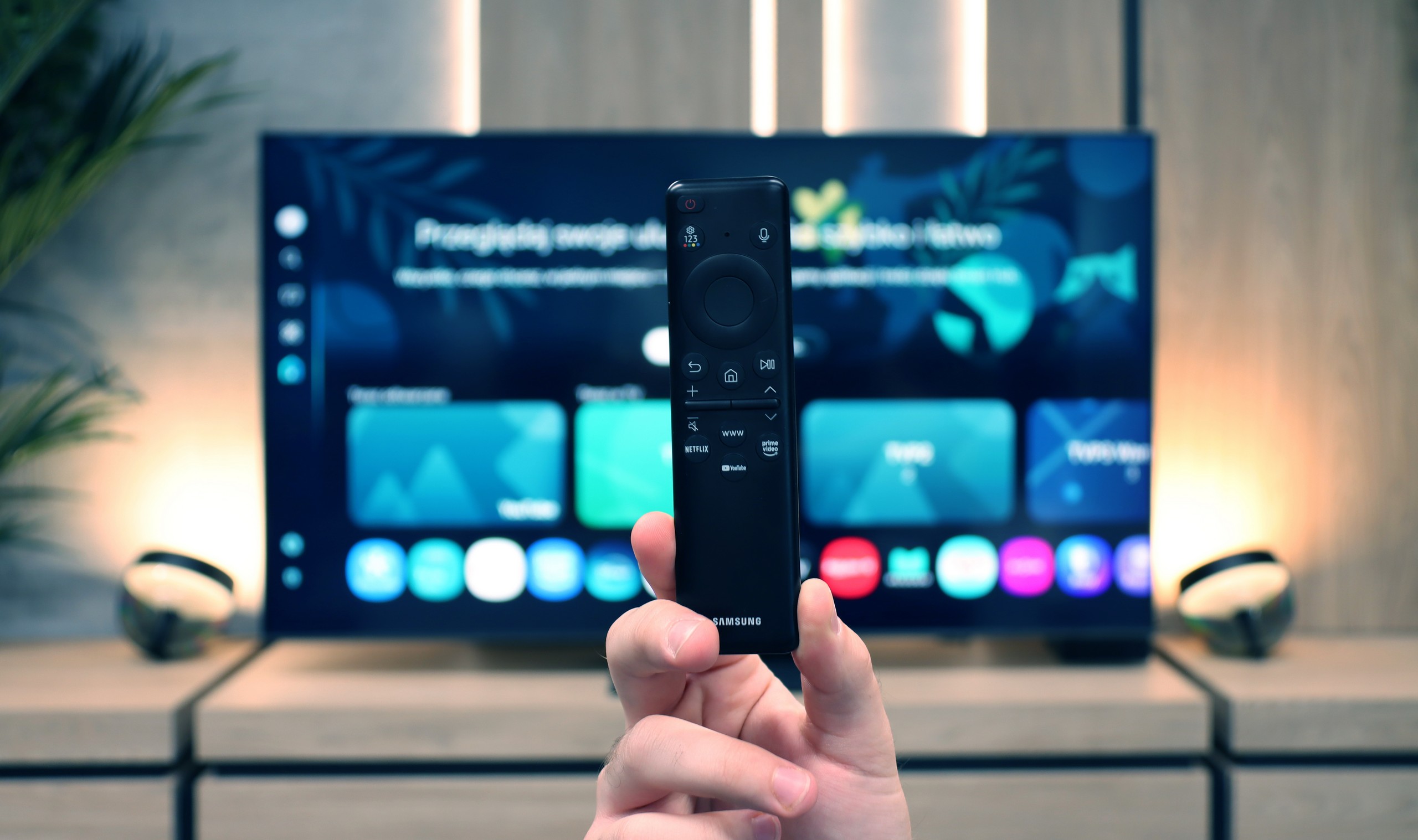
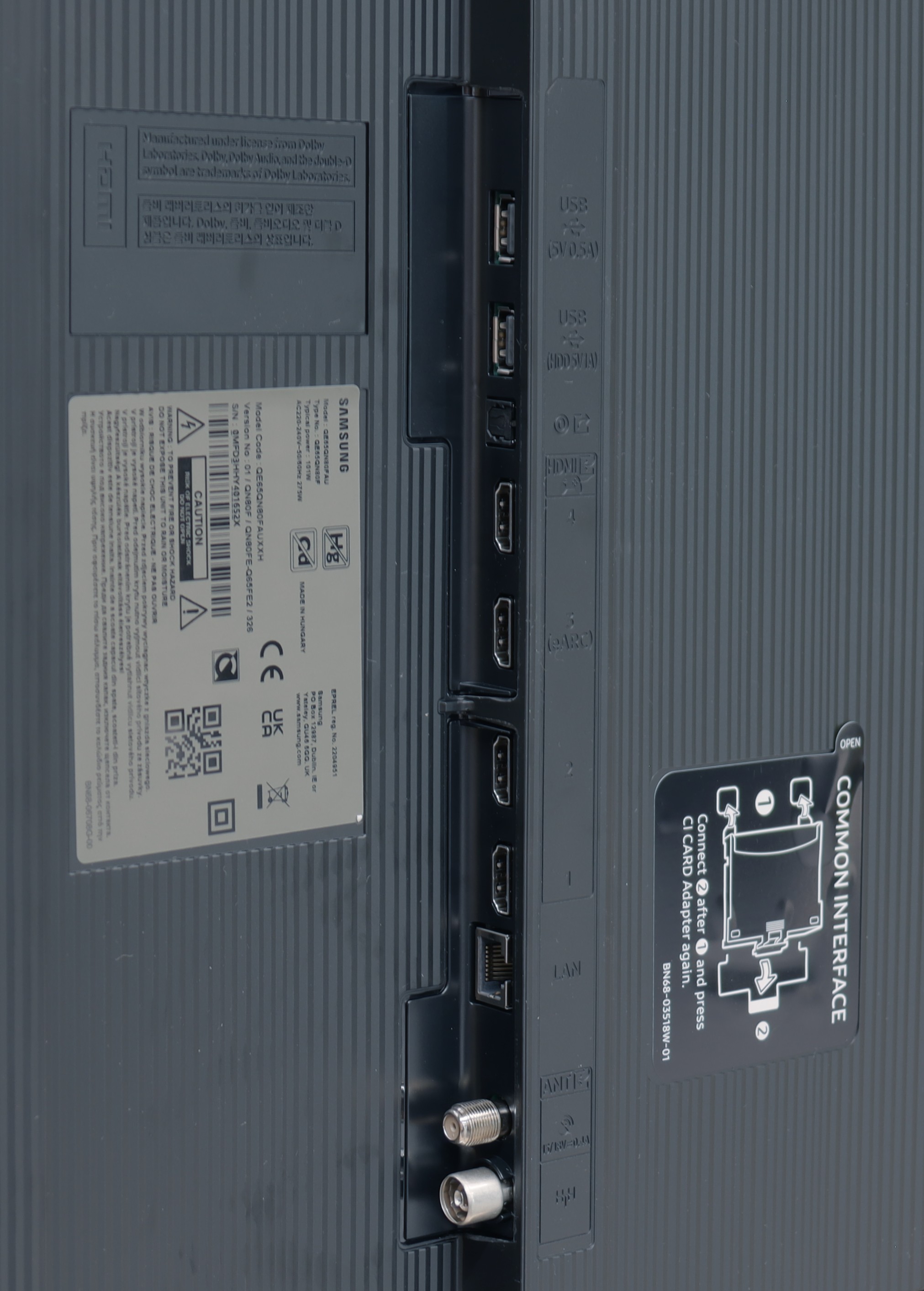
Samsung QN85D offers a wide range of smart features, thanks to the Tizen platform. Users have access to applications and features such as SmartThings, allowing management not only of Samsung devices but also equipment from other brands, creating a complete smart home ecosystem. The TV also supports AirPlay, enabling convenient content streaming from Apple devices directly to the screen, enhancing flexibility and comfort in everyday use.
Model QN85D also stands out in terms of unique features. The TV features Daily+, offering a variety of daily content such as fitness exercises or workspace. Additionally, the attractive appearance of the TV, while not as slim as last year's models, still presents well. The central stand provides solid support and adds character to the device, giving the TV a more elegant look.
In terms of user features, the TV is equipped with a remote that controls set-top boxes, such as Canal+, allowing easy control of most home equipment with a single device. The TV also has a PiP (Picture-in-Picture) function, enabling simultaneous viewing of two image sources. Unfortunately, one of the drawbacks that can be noticed is the lack of a recording function, which may be a significant downside for some users.
SmartTV QN80F: Tizen
When it comes to smart features, the QN80F has nothing to be ashamed of. On the contrary – Tizen is one of the richest operating systems in terms of functionality. We have voice search, AirPlay support, Miracast and all the major streaming platforms at our fingertips. But Samsung's real advantage reveals itself in the smart home – SmartThings. Not only can you sync light bulbs and vacuum robots, but you can also integrate devices from other manufacturers, thanks to support for the Matter standard. And suddenly it turns out that the QN80F can serve as a home command centre. There is just one "but" – Tizen is a closed system, so we might not find a few lesser-known apps. However, in practice, it still has everything that 99% of users need.
Classic TV features:
When it comes to classic features, it’s just as good – well, almost. The QN80F supports Picture-in-Picture, a rare but still useful PiP feature. We'll easily find EPG, the good old teletext (yes, it works!) and the ability to connect external devices via Bluetooth – whether it's headphones or a soundbar. Unfortunately, it lacks the option to record to USB from the built-in tuners. This is a small annoyance, especially since competitors in a similar price range are increasingly offering this feature. It may not be a must-have function, but since everything else works so well, it’s a shame it's missing that finishing touch.
Playing files from USB
9.1/10
9/10
Supported photo formats:
Maximum photo resolution:

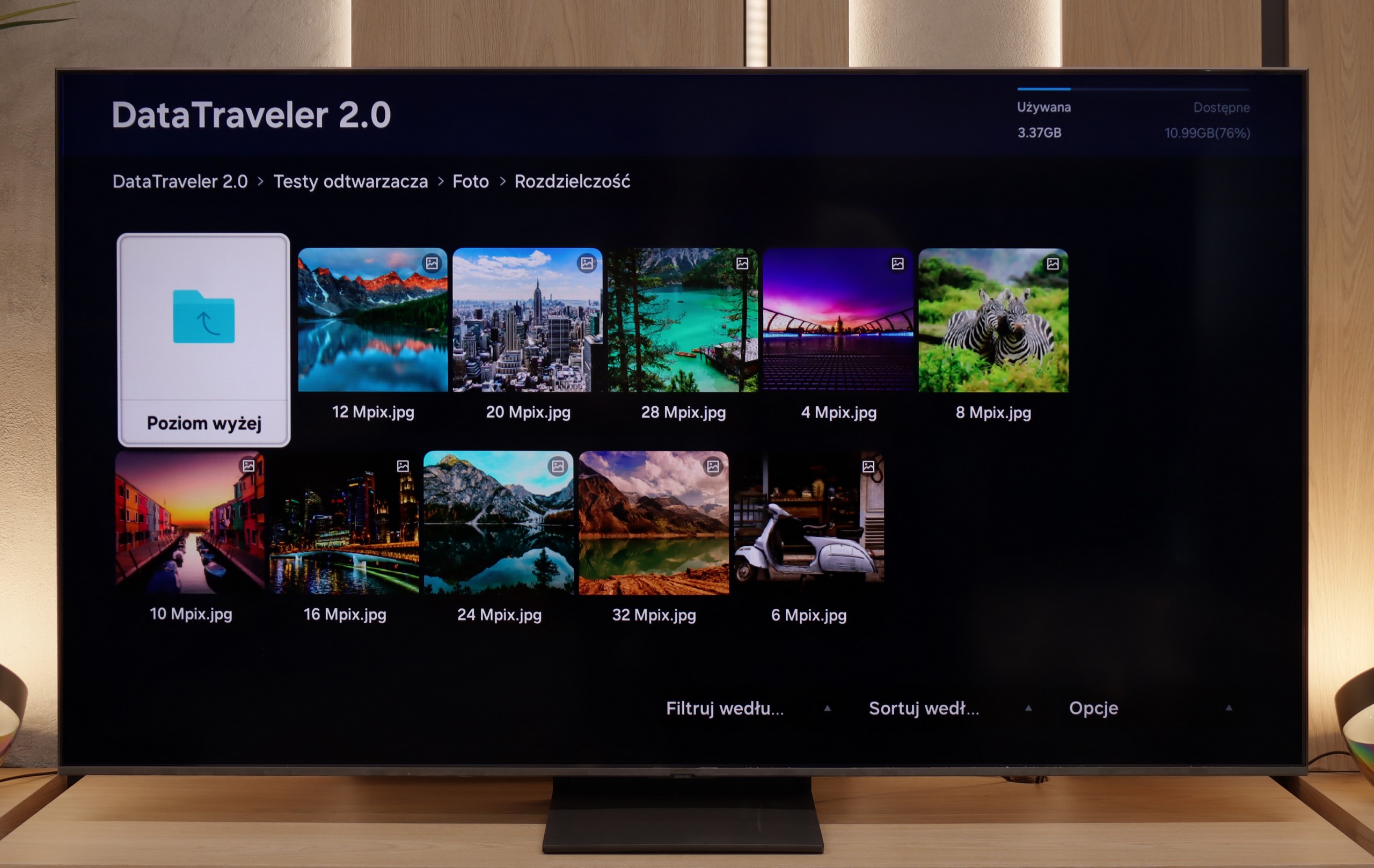
The built-in player in the Samsung QN85D should satisfy most users. It handles popular video and audio formats without much trouble, offering solid support for the most commonly used codecs. However, more demanding users may notice some shortcomings – it is not possible to play photos in the HEIC format, popular in Apple devices, as well as a few other, less common photo formats.
The built-in media player in the QN80F handles most popular video formats – from classic MP4 to more demanding containers. It may not be as versatile as VLC, but for home use, it’s more than sufficient. The situation is worse with photos – here, unfortunately, it’s quite limited. Support mainly includes the JPG format, but hey, at least that’s the most important one 👌. During our tests, there was also a minor issue with subtitles. The QN80F only handled the simple text format .txt – unfortunately, other, more advanced formats (like .srt or .sub) were not recognized.
Apps
8.7/10
8.7/10














































Sound
7/10
6.7/10
- Maximum volume-87dB
- Dolby Digital Plus 7.1
- Dolby True HD 7.1
- Dolby Atmos in Dolby Digital Plus (JOC)
- Dolby Atmos in Dolby True HD
- DTS:X in DTS-HD MA
- DTS-HD Master Audio
The sound on the Samsung QN85D television is pleasant, with a subtle sense of bass and clarity across the entire volume range. This is thanks to the built-in 2.2 40W speakers. Unfortunately, the lack of support for the DTS audio format may be problematic for users wanting to enjoy a full sound experience. In such cases, it will be necessary to use an external player to get support for this format.
For a TV of this class, the QN80F sounds surprisingly good. It supports the Dolby Atmos format, which is worth noting as this is still not obvious in many models in this range. Unlike the thinner QN70F, here you can even feel a slight bass – all thanks to the thicker casing, which simply provides more space for the sound to "breathe". It's perfectly adequate for everyday viewing and series, and with the right settings, you could even consider listening to music without the need to connect external equipment. But – as is the case with Samsung, there is unfortunately a lack of support for the DTS:X format, so if we are using audio devices that support this format, we will first need to connect them to the amplifier and only then to the TV.
Acoustic Measurements
No acoustic data
87dBC (Max)
75dBC


